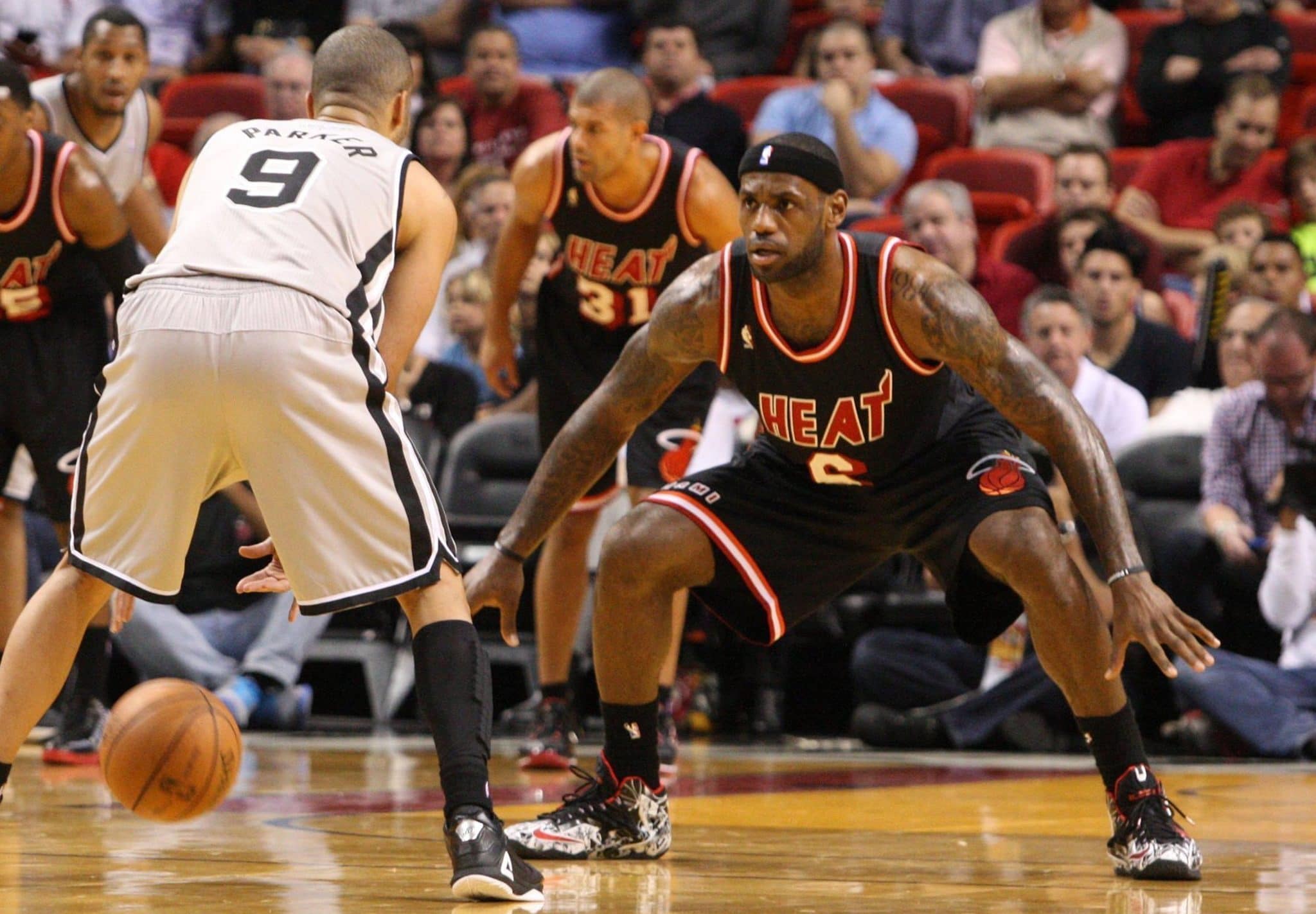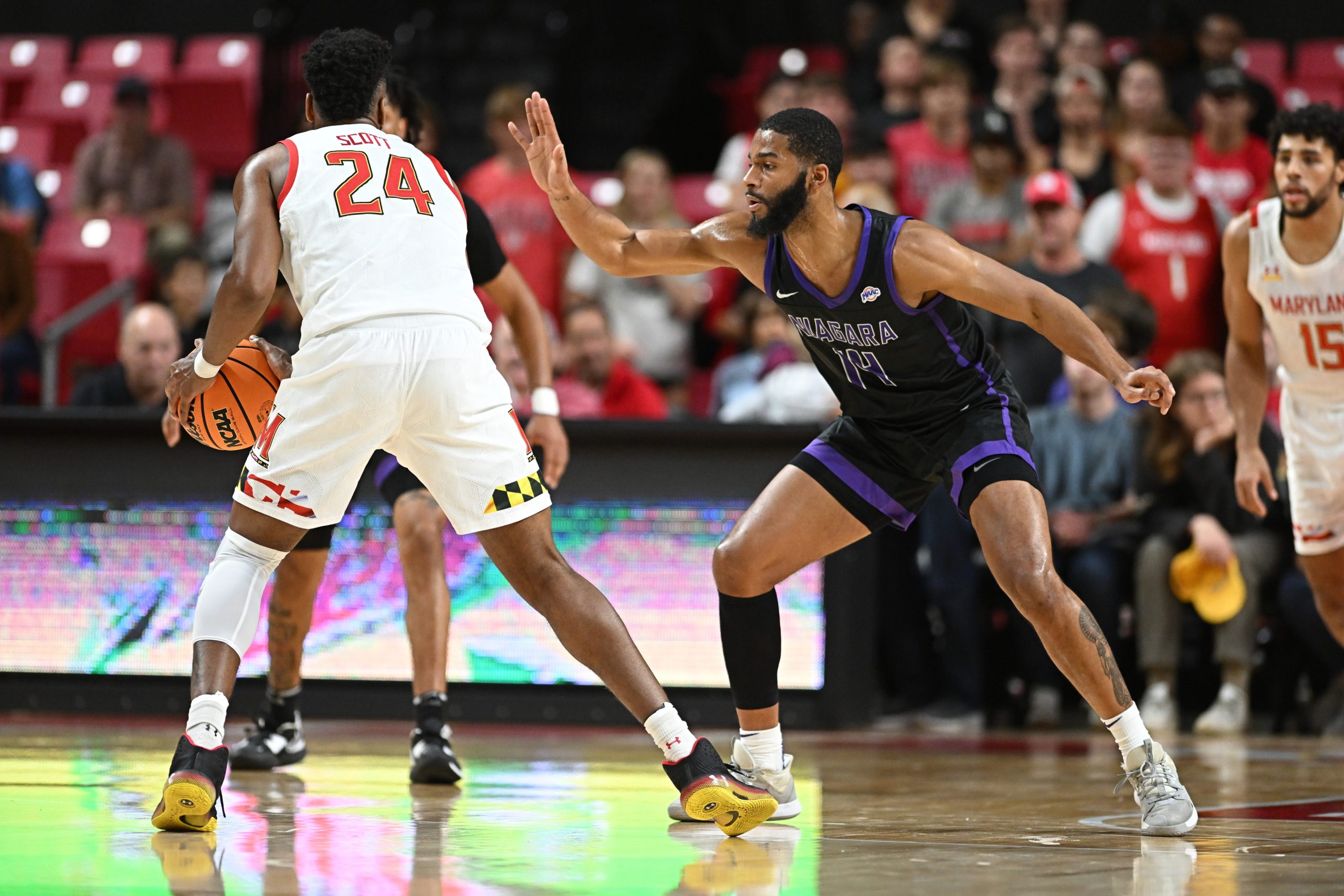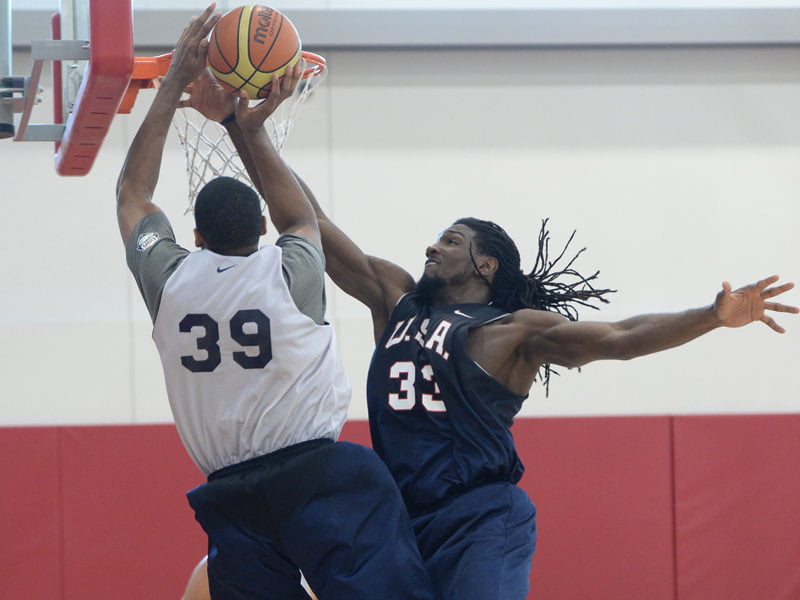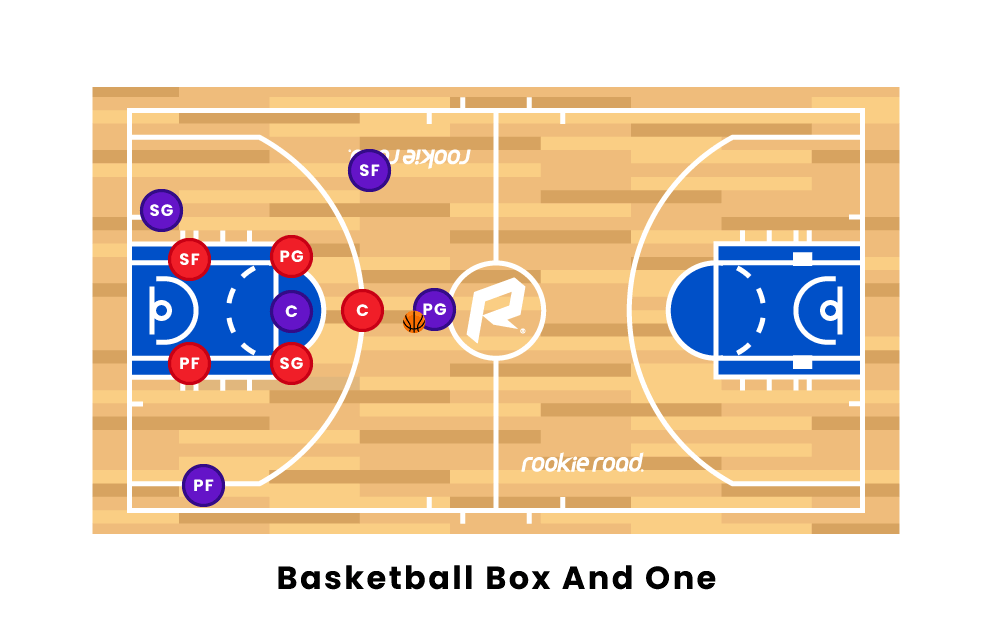Basketball Defense Positions – Strategies to Win Championships
Solid basketball defense is a necessity for any team winning a championship, and you want to have a variety of basketball defense positions, so you can handle a variety of situations. The best offense in the league won’t be enough if you can’t get the ball.
Look at the Lakers in the 80s – Showtime! Magic leading the break, Worthy streaking down the side for a long-armed authoritative dunk.
And if they needed to set up an offense, they had Kareem inside shooting his unstoppable sky hook, and Michael Cooper on the outside popping threes. They redefined the game of basketball into a fast-breaking, high-scoring steamroller.
But without solid basketball defense, they wouldn’t have been able to get the break started. So it was a good thing that they had one of the best defensive players in the league Michael Cooper.
And one of the scrappiest players in the league is Kurt Rambis, as well as the height of Kareem to rebound. The spectacular offense scored many points, but it was the solid defense that kept the other team from scoring more.
I always focus on defense at the beginning of the pre-season. Defense and conditioning, since they go hand in hand. Players need to get the ball before they can do anything with it – the better their defense is, the more often they’ll find themselves in possession of the ball.
And keep in mind that even at the professional level, the average shooting percentage is under 45% – greater than half of all shots that go up, miss. If your players can rebound on the defensive end, they cut down the ability of their opponents to score.
Of course, if your players can’t play defense, if they are slow to transition from offense to defense, you can expect the opposition’s shooting average to skyrocket as they stroll past your players on the way to the hoop. So basketball champs team discusses some ways you can set up your defense to stop your opponents and give the ball back to your team.
Defense is a part of the game that anyone, with practice, can be good at. It takes quickness, learning to position your body properly, and tenacity if you want to be considered a good defender.
The offense is something that comes naturally to most players. You can shoot or pass or have great ball control skills, but players often need to be taught how to play good defense.
We’re going to go through several aspects of defense – from positioning to footwork and steals to drawing offensive fouls – and hopefully everything in between.
Footwork / Positioning
A player who has good footwork can play with the best guards and stay with the top forwards. Making sure your body is stable and not out of control will help ensure you are in the proper position for optimum defense.
When you are defending, maintaining a static center of gravity is important. Your body should be sturdy and solid on the floor and you do this with the proper placement of your feet.
Have your feet at least shoulder-width apart. Drop you behind slightly by bending at the knees. One arm should be reaching at the player and the other should be used to maintain balance.
With this position, your body should look a lot wider than it is. With your feet apart and your arms in the proper position, a player will think twice about trying to drive past you.
Here are a few tips to think about when you are trying to move on the court:
- When you are moving on the court on defense, shuffle to maintain position, rather than turning your body and crossing your legs over to catch up with a player. Once you turn your body, you make your stature smaller and the offensive player can get by you a lot quicker. Plus, with the sturdier position, not crossing over and turning your body, you are in a better position to execute other defensive maneuvers like boxing out or stealing the ball
- Always take the baseline side away from the offensive player. Position your body so your opponent can’t go baseline on you. It is easier if they go inside because it is more likely you will have defensive help there.
- Try and stay one step ahead of the offensive player. Your movement on the court should mirror the offensive player, but you should also be ahead of them – not to the point of over-committing one way or another, but just enough to make sure they can’t go around you with a quick move.
- The above tips were for players guarding their offensive counterparts with the ball and usually a member of the backcourt. So what do you do when you are guarding someone without the ball? Does the footwork change?
Not really. But the positioning does. Your position will likely vary, depending on where the player is on the court.
- If you are guarding the non-ball-carrying player who is out on the perimeter, you still shuffle from place to place following where they are headed, but if they make a quick cut, you can turn your body to follow them. Keep your distance on the perimeter, because you don’t want them to receive a pass and then blow by you and drive to the hoop. You can keep your distance because if they want to shoot from three-point range, it is a much lower percentage shot than driving to the hoop for an easy layup.
- If your offensive player is in the paint, or close to it, a half-fronting position might be the best for you. Stand close to their inside shoulder and extend your arm in front of them to block the pass. The other hand should be used to corral them and can be placed somewhere near the middle of the back.
- Sometimes players who are defending bigger players in the key will take a full front position on those players. When this kind of defense is played it prevents most passes to the offensive player except for a careful place-lob pass.
- Typically you can gauge how close you should be to your offensive opponent by how far they are away from the hoop. If they are playing out at the three-point perimeter, you can usually give them about four or five feet. This gives you enough space not to get beat by a drive but is also not too far to put you out of position to make any type of long-shot defense. If they are around the key, but moving in and out of the 10 to 12’ range you can usually give a cushion of 2 to 3’. If they are in the paint, you need to tighten up your defense so you are right on top of them, denying passes and setting up the block.
Shot Blocking
There is nothing more dramatic in basketball besides the slam dunk, as the shot block. The ‘stuff’ as it is referred to on the court takes good timing and proper form to be successful. It helps to be tall, but with the right technique, even the shorter guys can knock down a few shots.
One of the biggest misconceptions of blocking a shot is swinging your arm at the ball, or ‘swatting’ once another player has taken the shot. When we get further into the technique, you will understand why swatting is one of the worst things you can do if you want to be a consistent shot blocker.
The Block
When you are ready to block a shot here’s what you have to remember. You need to keep your arm straight up and down. Not at an angle trying to create a ‘roof’ effect and certainly don’t swing your arm to try and get the big swat. Here’s why.
If your arm is straight up and down you create the greatest height possible. If you swat at the ball you create an angle in your arm that doesn’t allow for maximum height. Same if you try to put the roof on a shooter.
Picture a 10’ pole. If you lean that pole at even a 20-degree angle you probably lose three to four inches in total height. You can’t afford to lose that height when you are trying to block a shot. It can mean the difference between winning and losing.
Give yourself a chance when you are shot-blocking; make sure you are fully extended jump straight up and don’t swat at the ball.
Stealing the Ball
The best guards are those who can help the team on defense with their quickness by stealing the ball from the offensive player. Stealing takes quick hands and good timing, but it can be risky and you can leave yourself out of position.
We’ll go over two different types of steel and give tips on executing them successfully. We’ll also give you some insight into when you should steal and when it’s best to sit back and play good defense.
Steal off the Dribble
Allen Iverson is one of the best basketball players at stealing off the dribble. He plays great defense, but he adds an extra element by being able to create offense by stealing the ball. He typically steals the ball off the dribble from guards who are not protecting the ball or those who try to get too fancy.
-
- You can take advantage of players who don’t play with control, or those who don’t protect the ball. Many players will leave the ball unprotected just before they are about to pass it. Watch what the player is doing and see if they are preparing to pass. It might give you a window of opportunity.
- Watch the players who dribble it too high. Good dribblers keep the ball waist-high or lower. When a defender gets in tight, they will dribble the ball around knee height. Those players are difficult to steal the ball from. Target the players who are careless with the ball; bouncing it too high or lazily.
- When you go to steal time you play for just before the ball leaves the ball-handlers hands for the next dribble. Try to get the ball just before or just after it hits the floor. The reason for that is you need to check the ball away from the player at its furthest point from the hand. It simply gives you the advantage. If you try to play the ball near the hand, the offensive player could easily swipe it away and get around you because you have committed to the steal. If you play it near the hand you could also get called on a hand-check foul.
- Steal with your inside hand. For example, if you have a right-handed dribbler and they are moving to your left, your right hand is the inside hand. You should use this hand because, with the proper defensive form, you are already using this hand near the offensive player for your guard hand. If the player switches to the other side, your defensive position should also change and then it would be your left hand you should check the ball with.
Stealing off the pass
Anyone with the slightest bit of anticipation can be a great ball-stealer for their team. Passing is one of the most vulnerable events in basketball and is easy to take advantage of if your opposition is lazy or inaccurate with their passing.
- Watch the way a team passes. A good team will make crisp passes that are short and difficult to defend. A team that lobs the ball or tries to make long telegraph passes, is the easiest team to target.
- Make your break for a pass when the ball leaves the passer’s hands. Even on poor passing teams, the ball will travel reasonably quickly, so you need to be on your toes to intercept the pass.
- Don’t leave yourself out of position. You need to make sure you can get to the ball if you go after it.
Good positioning draws the foul every time:
When you are tracking an opponent on defense one of the surest ways to draw an offensive foul, it to have good positioning. By shuffling your feet and making sure you are one step ahead of your opponent, you increase the likelihood of them running into you for a foul.
When you shuffle across the floor, you are most likely to be square to the ball handler and have a sturdy base. If they drive forward to you, you already have your feet planted and they will be running into you. If you have established a defensive position, you will draw the foul every time.
Top Basketball Defense Positions Technique
-
Man-to-Man Defense
Every player needs to know how to play man-to-man defense. Man-to-man is a basic skill that needs to be taught and learned because a player who can’t play decent man-to-man will be a black hole on the floor – and your opponent will find that black hole and drive through it all night.
So start the season by teaching solid man-to-man principles, as well as how this integrates into a whole-team concept with elements like help and recovery.
One important aspect of any basketball defense, whether man-to-man or zone, is quickness. Push your players to improve their quickness, and they’ll improve their effectiveness at both ends of the court.
-
Zone Defenses
Playing a zone defense is a bit different from playing man-to-man, although many of the techniques for playing a position are no different than those of the man-to-man defense.
The only difference is, that you are defending an area, rather than a man. Not that you need to play man-to-man all the time. I prefer man-to-man over the zone, but there isn’t anything wrong with mixing it up now and again.
Use a zone sometimes if you want – the 2-3 Zone and 1-3-1 Zone are probably the most commonly used zone defenses and they have their place among a team’s defensive strategies.
Just don’t let your players think that playing zone is easier and less tiring than man to man, because once they start thinking that, they start acting like that, and that’s when holes in your defense start to open up.
Good zone defense requires strong man-to-man skills and excellent communication among players, and defenders need to see the court and be able to plug holes immediately. Playing a good zone defense is not easy.
For a good look at how to build a strong, team-oriented basketball defense, drills included, you can’t get much better than the legendary DeMatha High School, which has produced plenty of championship teams built on its excellent defense.
Here are a few key elements of playing in a zone defense:
- Keep your hands up in the air. The only way to break a zone defense is to pass the ball quickly and frequently. If you keep your hands in the air you could bat the ball down and create a turnover for your team.
- Don’t over-commit. Too many young players want to play zone defense too much like they play man-to-man. You cover a zone, not a man. When players get into covering a man in their zone, they stretch the zone out, allowing for a pass to be made into the lane they left open by being too zealous on defense.
- Close off the driving lanes. You have the time because you aren’t chasing down defenders. When you see a player trying to drive the lane, just shuffle step into the lane and you could draw the foul.
- Talk to your players. Call out screens and cutters and any time a shot is taken call ‘SHOT’ so everyone can take a position to box out. When you play man-to-man, because everything is broken down into individual matchups, there is only a need to call out screens. When playing a zone, because oftentimes you will have your back to the hoop, other defenders need to know if someone has cut into their area, so they can protect the portable basketball hoop.
- Keep an eye on who is in your zone, because when a shot is made, you need to choose who it is you are going to box out. It’s not like man-to-man where you box out your man.
-
Full-Court and Half-Court Presses
Of course, basketball defense can start anywhere on the court – most “normal” game situations have the defense set up in the quarter of the court, defending their basket.
But we can also extend that to the half-court and the full-court – in other words, we can apply more pressure (presses) and try to force turnovers by using a Half-Court Press and/or a Full Court Press.
These defenses would be used for a few minutes to force a couple of turnovers, then taken off so that the offense doesn’t adjust to them. Then they can be used again later in the game.
-
Combination Defenses
One option that bridges man-to-man defense and a full-court or three-quarter court press would be the Run and Jump – an explosive defense aimed at creating panic in your opponent and hopefully turnovers.
And of course, several basketball defenses combine man-to-man with zone elements, to get the strengths of each while limiting the weaknesses of each.
These would be defenses like the Box and 1, the Triangle and 2, and the Box and None – all good defensive strategies under the right circumstances.
Choose the defense positions that best suit your personality – a smaller, quick team would likely be more suited to straight-up man-to-man to take advantage of their speed, while a bigger, slower team would likely be more suited to a zone that could take advantage of their height.
But you should also have a few alternative defense positions under your belt – if you play the same defense for the entire game, you run the risk of your opponent figuring out how to beat it.
Having the capability to change up your defense from time to time will force your opponent to constantly adjust. And having a good press to throw at your opponent now and then is usually good for a few quick baskets.
Regardless of the style of defense, you choose to use, instill in your players the idea that they must be offensive on defense – they cannot allow the opponent to dictate what happens.
They must also transition quickly from offense to defense (use this drill to improve the transition from offense to defense)
Their defense must control the game – they must direct the ball in the direction they want; they must apply pressure to the ball carrier so that he makes weak or ill-timed passes, or takes poor-percentage shots. They must force the opponent to either turn over the ball or take a shot they don’t want.
And that happens when you play great basketball defense.






